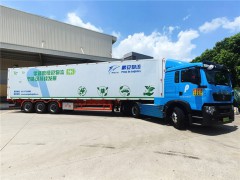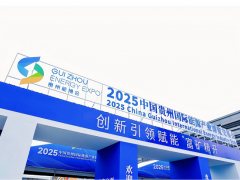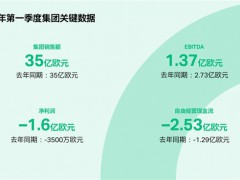據6月23日offshore energy消息:油田服務巨頭斯倫貝謝是下一家致力于2050年實現溫室氣體凈零排放的公司。
該公司周二表示,已花費了18個月時間進行廣泛分析,并與專家合作制定了一項脫碳計劃。
該計劃的重點是減少石油和天然氣價值鏈的1類、2類和3類排放,包括引入“過渡技術”組合,以幫助客戶和更廣泛的行業實現脫碳承諾。
斯倫貝謝致力于實現凈零排放,以2019年為基準年,到2025年將1類和2類排放減少30%。到2030年,該公司希望將1類和2類排放減少50%,3類排放減少30%。到2050年,該公司應達到凈零排放,對補償的依賴程度最低。
在實現零凈值的過程中,斯倫貝謝將確保與氣候相關財務披露工作組(TCFD)和可持續發展會計委員會(SASB)框架保持一致的透明度。在此背景下,斯倫貝謝正在與科學目標倡議合作,以對其2030年目標進行正式的外部驗證。
斯倫貝謝首席執行官Olivier Le Peuch表示:“在滿足當前和長期、可持續的能源需求的同時,應對氣候變化是一個新行業的當務之急。我們有2050年實現凈零碳排放的雄心,這在我們的行業中是獨一無二的,因為我們是一家能力和文化都根植于科學的技術公司。
“同時加強了我們為所有人的利益釋放能源的承諾。我們的凈零目標包括3類的總排放量;這在能源服務行業尚屬首次”。
斯倫貝謝公司首席戰略和可持續發展官Katharina Beumelburg補充道:“脫碳計劃基于氣候科學,并集中在三個關鍵領域:運營排放;客戶排放;和負碳行動。
“斯倫貝謝75%的基準溫室氣體排放量來自客戶使用的技術。為了解決這一問題,斯倫貝謝推出了過渡技術產品組合,旨在幫助客戶減少1類和2類排放,同時使我們能夠實現3類排放目標”。
過渡技術組合將解決無組織排放、減少燃燒、電氣化、油井建設排放和全油田開發解決方案。
由專有技術和解決方案組成,這些將有助于減少直接和間接排放以及其他環境屬性,同時提高效率、可靠性和性能。
為了量化這些技術的影響,斯倫貝謝開發了一個框架,該框架能夠實現測量的標準化,通過凈足跡比較進行基準測試,并最終在規劃過程中更好地選擇知情的技術。
斯倫貝謝的脫碳計劃與《巴黎協定》保持一致,將全球變暖限制在1.5攝氏度以內,到本世紀中葉實現氣候中立。該公司稱,有望提前實現此前設定的近期減排目標,即到2025年1類和2類減排30%。
馮娟 摘譯自 offshore energy
原文如下:
Schlumberger commits to reaching net-zero by 2050
Giant oilfield services provider Schlumberger is the next company in line to commit to achieving net-zero greenhouse gas (GHG) emissions by 2050.
Schlumberger said on Tuesday that it spent 18 months conducting extensive analysis and working with experts to produce a decarbonization plan.
With minimal reliance on offsets, the plan is focused on reducing scope 1, 2, and 3 emissions across the oil and gas value chain – including the introduction of its ‘Transition Technologies’ portfolio to assist its customers and the wider industry in their decarbonization commitments.
Schlumberger is committed to getting to net-zero, using 2019 as a baseline year by reducing scopes 1 and 2 by 30 per cent by 2025. By 2030, the company wants to reduce scopes 1 and 2 by 50 per cent and scope 3 by 30 per cent. By 2050 it should hit net-zero, with minimal reliance on offsets.
Along this journey to net-zero, Schlumberger will ensure transparency in alignment with the Task Force on Climate-related Financial Disclosures (TCFD) and Sustainability Accounting Boards (SASB) frameworks. In this context, Schlumberger is working with the Science-based Target initiative for formal external validation of its 2030 target.
Olivier Le Peuch, chief executive officer at Schlumberger, said: “There is a new industry imperative to address climate change while meeting the demand for energy both today and in the long term, sustainably. We have a 2050 net-zero carbon emissions ambition which I believe is unique in our industry due to our capabilities as a technology company and our culture grounded in science.
“This reinforces our commitment to unlocking access to energy, for the benefit of all. Our net-zero target is inclusive of total scope 3 emissions; this is a first in the energy services industry”.
Katharina Beumelburg, chief strategy and sustainability officer at Schlumberger, added: “Our decarbonization plans are based upon climate science and focused on three key areas: operational emissions; customer emissions; and carbon-negative actions.
“75 per cent of Schlumberger’s baseline GHG footprint comes from the technologies our customers use. To address this, Schlumberger has introduced our Transition Technologies portfolio, which is designed to help customers reduce their scope 1 and 2 emissions, while simultaneously enabling us to meet our scope 3 emissions target”.
The Transition Technologies portfolio will address fugitive emissions, flaring reduction, electrification, well construction emissions, and full-field development solutions.
Comprised of proprietary technologies and solutions, these will help to reduce direct and indirect emissions along with other environmental attributes, while simultaneously driving efficiency, reliability, and performance.
To quantify the impact of these technologies, Schlumberger has developed a framework that enables standardization of measurement, benchmarking through net-footprint comparisons, and ultimately better-informed technology selection during planning.
Schlumberger’s decarbonization plan is aligned with the Paris Agreement to limit global warming to 1.5 degrees Celsius, achieving a climate-neutral world by mid-century. Schlumberger stated that it was on track to achieve its previously set near-term emissions reduction target of 30 per cent by 2025 for scope 1 and 2, ahead of schedule.
免責聲明:本網轉載自其它媒體的文章,目的在于弘揚石化精神,傳遞更多石化信息,并不代表本網贊同其觀點和對其真實性負責,在此我們謹向原作者和原媒體致以敬意。如果您認為本站文章侵犯了您的版權,請與我們聯系,我們將第一時間刪除。







